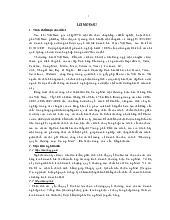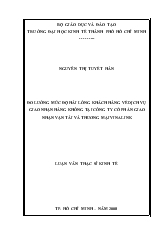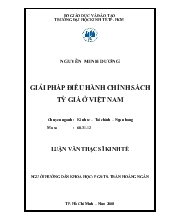Tóm tắt Luận án The epidemiological, biological characteristics of Fasciola sp. and the efficacy of anthelmintic treatments in cattle in Mekong Delta
- Người chia sẻ :
- Số trang : 25 trang
- Lượt xem : 10
- Lượt tải : 500
- Tất cả luận văn được sưu tầm từ nhiều nguồn, chúng tôi không chịu trách nhiệm bản quyền nếu bạn sử dụng vào mục đích thương mại
Bạn đang xem trước 20 trang tài liệu Tóm tắt Luận án The epidemiological, biological characteristics of Fasciola sp. and the efficacy of anthelmintic treatments in cattle in Mekong Delta, để xem tài liệu hoàn chỉnh bạn click vào nút DOWNLOAD LUẬN VĂN ở trên
According to the World Health Organization (WHO), Fascioliasis is one of the important diseases, which is found in humans and animals. More than 2.4 million people in 70 countries were affected by the disease (WHO, 2015; Amer, 1016). In Vietnam, Fascioliasis in humans tends to increase gradually, from 2006 to 2010. In fact, 15,764 people and cases were infected by Fasciola sp. in 2006 and those cases increased to over 20,000 people in 2011. The disease in 52 provinces from North to South and pathogenic species is determined mainly Fasciola gigantica (Nair et al. 2012). Fasciolosis has been demonstrated and listed in zoonosis diseases. The disease causes by the large liver flukes which require the intermediate host (freshwater snail species) to complete its life cycle. The Mekong Delta possesses the geographic features such as innumerable canals, rivers, stream which is suitable to develop agriculture: paddy rice and vegetables as well as provide the appropriate conditions for freshwater snail development. Moreover, livestock husbandry also great develops because famers take advantages the source of by-product from agricultural processing. However, most of husbandry farms are small-scale farms where people normally use by-products from agriculture and they do not have well knowledge about applying the techniques in animal husbandry and veterinary. As the results, their livestocks expose high prevalence of helminthes infection. Therefore, it is crucial to research about fasciolosis and how to manage the spreading of this disease in order to minimize the damage from it. The study aimed to investigate “The epidemiological, biological characteristics of Fasciola sp. and the efficacy of anthelmintic treatments in cattle in Mekong Delta”




